A bridge that sparked a huge public outcry after the Bomet County government allocated Sh8.4 million for its construction only for a contractor to erect a box culvert-like structure, is set to be completed and used six years later.
It comes as the devolved government seeks to put behind it a shameful chapter in infrastructure development that has made it a laughing stock in the country.
The Chepkositonik Bridge connects Sukutek and Chepkositonik villages in Merigi ward, Bomet East sub-county, a region that generally lags in road construction in Bomet County.
“The bridge is 95 per cent complete and the contractor is putting the finishing touches before handing it over to the county government for use by residents of the area,” said Mr Erick Ngetich, the County Executive Committee (CEC) member for roads and public works.
Mr Ngetich said the implementation of the project was supervised by engineers from the devolved government unit to avoid past mistakes.
Six years ago, the bridge put a black mark on the county government’s allocation of resources to development projects and the failure of relevant departments to supervise their construction, pointing to the possible loss of millions of taxpayers’ money due to shoddy work by contractors.

The Sh8.4 million bridge set for demolition by the Bomet county government, which has bowed to pressure by members of the public who have protested against the shoddy work, August 30, 2018. PHOTO | VITALIS KIMUTAI | NATION MEDIA GROUP
According to the tender documents, the bridge was allocated Sh8,457,560 with Triple Tie Investments Company, which won the tender on June 18, 2018, expected to deliver the project within six months with a deadline of December 17, 2018.
The bridge, constructed like a box culvert, was 4.5 meters long and three meters wide, and was built on an old footbridge dating the 1960s, according to residents of the area.
But tender documents seen by the Nation showed that it was supposed to be nine meters long and 6.63 meters wide, a clear indication that what was built was half the size of what was tendered for.
Triple Tie Investment Company, whose directors were listed at the Registrar of Companies as Mr Erick Kipkorir Mutai, Mr Joseph Mutai and Ms Viola Chelangat, had also not obtained an Environmental Impact Assessment (EIA) license, which is supposed to be issued by the National Environmental Management Authority (NEMA) in accordance with the law during the construction of such facilities.
The National Construction Authority (NCA) marked the box-like bridge for demolition after an inspection following complaints from residents that the material used in its construction did not meet the minimum standards.
A report by the Materials Testing and Research Division of the Ministry of Roads and Public Works at the Kisii Regional Laboratory, dated August 28, 2018, confirmed that the work done was substandard.
“The material used to construct the structure did not meet the comprehensive strength required for a bridge and should be demolished,” the report said.
The project left a black mark on the administration of former governor, the late Dr Joyce Laboso, as it faced a backlash from the public, with the then County Executive Committee (CEC) member for roads and public works, Philip Sawek, struggling to explain how his office allowed the construction to proceed with the glaring anomalies.
Residents then demanded that the Ethics and Anti-Corruption Commission (EACC) and the Directorate of Criminal Investigations (DCI) investigate the matter, but the facility was demolished as the pressure reached a crescendo.
“I have ordered that the bridge be rebuilt to the set specifications and I want to assure the public that taxpayers’ money was not lost as a result,” Dr Laboso said on July 19, 2019.
Reconstruction began in 2019, but the project stalled until a month and a half ago, when work resumed under the administration of Governor Hillary Barchok, who had repeatedly assured residents that the bridge construction would be completed.
“We will be re-tendering in early January 2019, as the tender awarded to Triple Tie Investment Company has been cancelled after running its full course without implementation. It will be re-advertised in the 2018/2019 fiscal year,” Engineer Sawek said on December 29, 2018.
Mr Sawek was removed from the position a year later after Professor Barchok succeeded Dr. Laboso as the third governor of Bomet County.
When the Nation visited the site over the weekend, workers were busy putting the finishing touches to the construction but there were no signs indicating the company doing the work, the scope of the work and the client funding it.
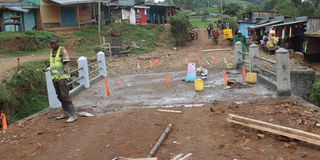
The Chepkositonik bridge is almost complete after the box-like culvert facility was condemned, demolished and reconstructed.
Photo credit: VITALIS KIMUTAI| NMG
It is also a requirement that the contractor install signage to educate residents on the need to practice safe sex and reduce the spread of HIV/AIDS, which the company implementing the project failed to do.
The main agricultural activities in the area are the cultivation of tea, potatoes, maize, beans, cabbage, avocados, pyrethrum and dairy production, with the produce being highly perishable, hence the need for roads.
Although residents say the new bridge is not wide enough and can only accommodate one vehicle at a time, they agree that a remedy has been found for the headaches they have experienced over the years.
“For the past six years, the bridge has become an obstacle to the smooth movement of people from Merigi and Kiromwok areas after it was demolished, rebuilt halfway and abandoned by the contractor under unclear circumstances,” said Mr Tonui.
Ms. Recho Langat, a resident, said the footbridge had served the residents for decades, with light trucks, small cars and motorcycles using it despite it being unstable and posing a risk to users.
“Residents of the area have been using a longer route to transport heavy goods to the market for years, resulting in losses due to poor infrastructure facilities,” Ms Langat said.
Ms Janeth Koskei, a civil servant, said many expectant mothers have given birth before reaching hospitals in the area due to the poor state of the road and bridge, especially during the rainy season.
“The county government should improve the state of the Merigi-Kiromwok, Menet, Mugango road to end the years of suffering the people have been subjected to,” said Ms Koskei.
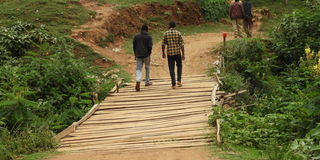
Two men walks on a wooden bridge adjacent to one under construction a Chepkositonik in Merigi ward Bomet county, after an initial one was demolished due to poor workmanship six years ago, in this photo taken on August 9, 2023.
Photo credit: VITALIS KIMUTAI| NMG
Ms Koskei said, “Unfortunately, contractors who are awarded tenders to gravel the roads do not compact them, yet they are paid by the devolved government unit for the work done. They leave huge boulders in the middle of the road as a result of lack of supervision by those in charge.”
Mr David Bett, a trader, said the poor state of infrastructural facilities in the area is a clear indication of the caliber of leaders who have been elected to influential positions over the years.
“It is a matter of concern that leaders in the area have looked the other way as shoddy work is being done by contractors with huge resources pumped in by the national and county governments,” Mr. Bett said.

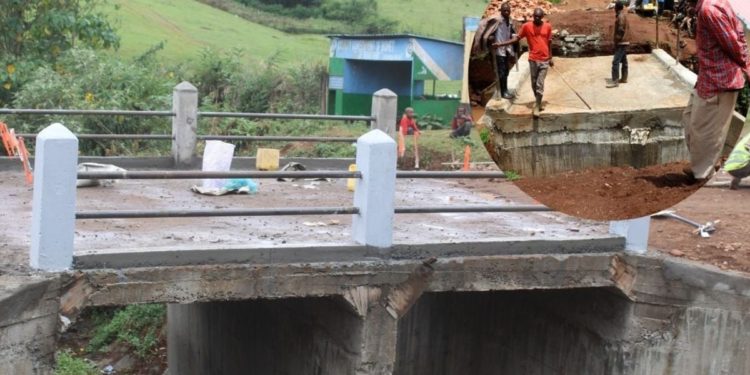


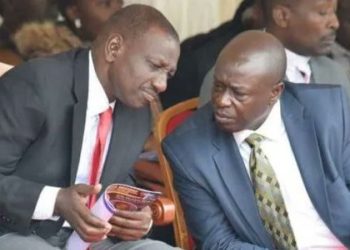

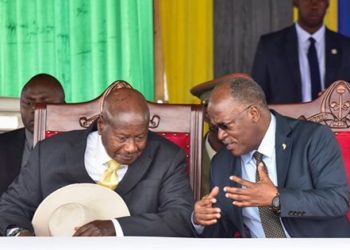


Discussion about this post